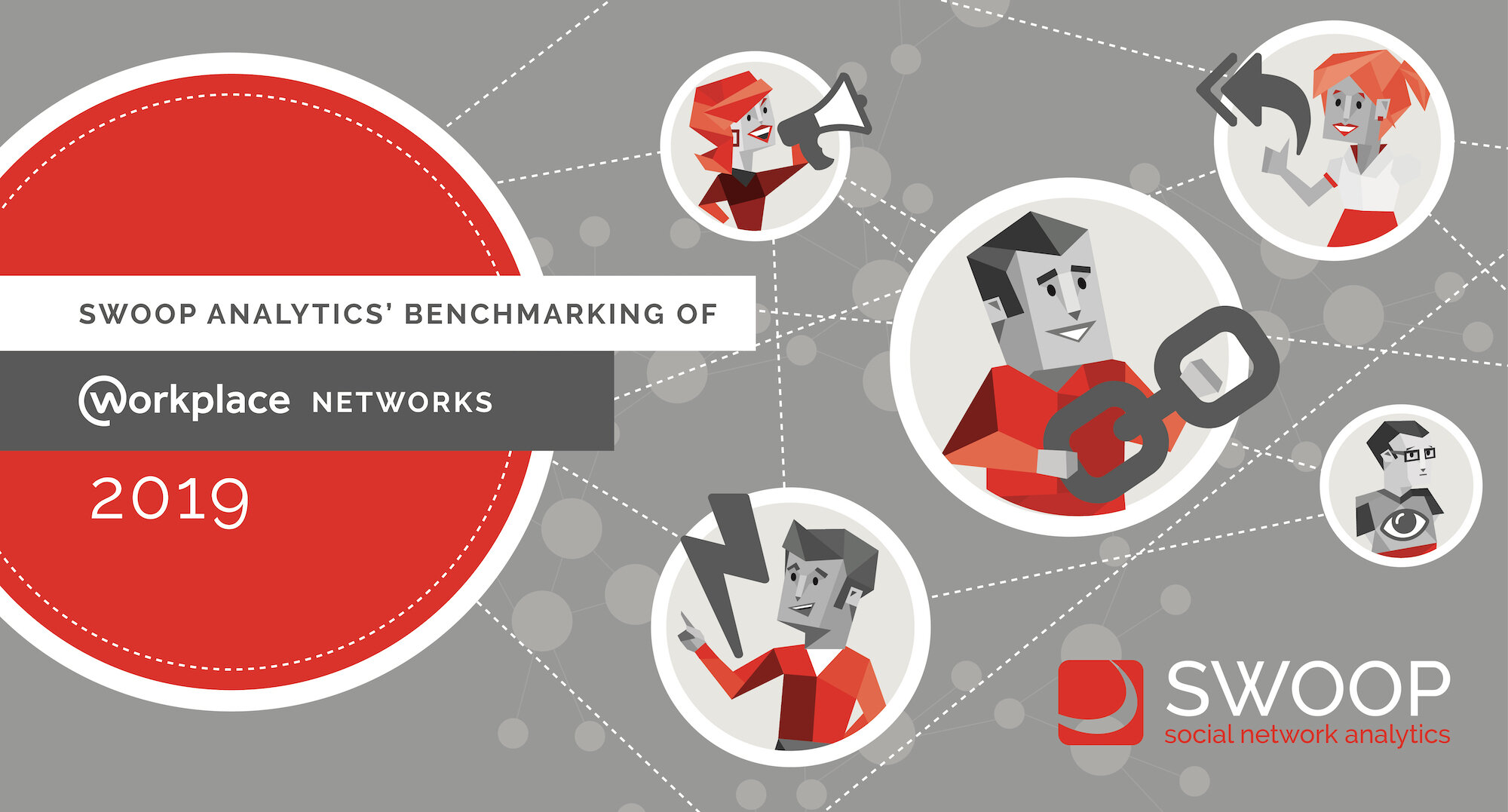Workplace networks are growing and maturing – SWOOP benchmarking
SWOOP has conducted the world’s largest-ever analysis of Workplace by Facebook networks, examining 68 organisations worldwide who opted into SWOOP’s benchmarking.
The analysis represents more than 630,000 users over a six-month period, a significant proportion of Workplace’s two million paid users, and more than 15 million online interactions, across a breadth of industry sectors and geographies.
The SWOOP 2019 benchmarking report of Workplace networks found overall collaborative performance has improved across almost all of SWOOP’s 16 comparative measurescompared with 2018 results, indicating Workplace networks have grown and matured over the past 12 months.
In this first instalment of a series of articles looking at key aspects of the report’s findings, we outline the basis for the benchmarking and the key findings.
SWOOP provides a unique online platform which analyses online interactions from Enterprise Social Networks (ESN) in real time. Traditional benchmarking typically relies on surveying opinions from a handful of staff from participating organisations. SWOOP captures actual online interactions from all staff who use Workplace, to derive its collaboration insights. SWOOP has been analysing data from Workplace by Facebook for more than two years.
SWOOP’s behavioural personas
For this latest benchmarking study, the anonymised collaboration data from the 68 organisations was collected over a six-month period. In our inaugural benchmarking report of Workplace networks in 2018, we examined 22 organisations. The 68 organisations in the 2019 report ranged in size from 130 to 85,000 users (average 9,300) across a breadth of industry sectors and geographies.
Our ESN benchmarking studies make use of our collaboration benchmarking framework, which positions specific measures against stages in the ESN maturity: Platform Adoption, User Engagement, Connecting, Sharing, Problem Solving and Innovating.
We have now conducted ESN benchmarking studies incorporating some 230+ organisations over a period of more than three years. We have also conducted many customer-specific benchmarking analyses where we have engaged with the client specifically around their own results as compared with their peers. Our measurement methods have been validated and complemented by our academic partners over this period. We are therefore confident the results we present here accurately reflect the differential performances observed across the Workplace client base.
We acknowledge organisations can gain value from using Workplace purely as an information sharing, social media or personal efficiency platform. Our focus, however, is on how organisations are using Workplace to collaborate to get their work done. This is where we feel more sustainable value can be drawn from the Workplace platform.
If we were to select a simple tagline that collectively describes where organisations are currently at, it would be “Warming to the Challenges Ahead”.
Our key findings from the 2019 SWOOP Benchmarking of Workplace networks:
Workplace continues to deliver on its promise of fast adoption.
Overall collaborative performance has improved across almost all of SWOOP’s 16 comparative measures since 2018.
For the majority of organisations, Workplace is still new, and many are using it as a social media and information sharing service, more so than a place for deeper collaboration. However, the SWOOP Award winners demonstrate what can be achieved. This will be discussed in the second instalment in this blog series.
Benchmarking identifies a small cadre (about 5%) of collaboration leaders in each group category that significantly outperform the rest; therefore demonstrating what is possible.
Don’t ignore your Social (non-work) groups. Their demonstrated diversity and cohesiveness could create the relationships that lead to your next block buster innovation success.
As well as taking a deep dive into how organisations are using Workplace, we analysed 1,360 groups in Workplace that have self-identified as a ‘Team & Project’. We found the average team size was 297 members.
This clearly suggests that these are not teams in the traditional sense, but a means of sharing information with a larger group of people. However, with only five per cent of the 1,360 teams having 10 or less active members, we suggest this is an area of Workplace where customers have the potential to reap significantly more value.
We hope by reading the SWOOP Benchmarking report of Workplace networks, it will help internal communications managers learn how to move beyond simply broadcasting corporate messages to engaging with their audience through interactive conversation and give executives and managers insights to optimise their contributions to team-based outcomes.
Download the full report here.

